
Mimmo Jodice, photography.
“Because of the particularities of German culture, according to Adorno, National Socialism could pose as a substitute for the sense of belonging lost through the capitalism driven rationalization of society. But it is a freakish social world. The coldness is not overcome, and togetherness is achieved through exclusionary myths. If we take the broadly Aristotelian picture as some kind of baseline, the life that Adorno describes is about as damaged as life can be.”
Brian O’Connor
“Life, as we find it, is too hard for us; it brings us too many pains, disappointments, and impossible tasks.”
Freud
“…the utopians realized that profit was becoming the driving force of history in the burgeoning trade economy.”
Max Horkheimer
The machinery of propaganda in the West today can almost not be calculated. Mass entertainment from Hollywood is both ubiquitous and increasingly infantile. The end of the Cold War, which lasted but a heartbeat, revealed something of the Utopian notions of western Capital. As Susan Buck Morss said, in the east it was a Utopia of production, in the West it was one of consumption. But the capitalist Utopian was far more entrenched and internalized. Progress was a fetish. And it is so today, too.
“The disintegration of cultural forms is endemic to modernity. Its temporality is that of fashion, the relentless production of the new-and therefore, just as relentlessly, the production of the outmoded.”
Susan Buck Morss

Dozier Bell
“Early forms of property coincided with magical practices designed to banish death, and as all human relations come to be more completely determined by property, the ratio exorcises death as obstinately as rites ever did. At a final stage, in despair, death itself becomes property. Its metaphysical uplifting relieves us of the its experience. Our current death metaphysics is nothing but society’s impotent solace for the fact that social change has robbed men of what was once said to make death bearable for them, of the feeling of its epic unity with a full life.”
Adorno (Negative Dialectics)
When Benjamin wrote of the Paris arcades, he noted that as they gave way to more modern forms of commodity presentation, a sleep began to fall over the West. The collective consciousness of the bourgeois west was falling deeper and deeper into a forgetful trance; it was Sleeping Beauty written by a Marxist (per Buck Morss).
“Shock is central to Benjamin’s theory of modernity. It lies behind the techno-aesthetics of the urban phantasmagoria, and exposes it to be a compensatory form. Benjamin refers to Freud’s theory of war neurosis, that consciousness parries shock by preventing it from penetrating deep enough to leave a permanent trace on memory, and claims that this battlefield experience has become the norm in modern life.”
Susan Buck Morss

Eduardo Arroyo
Benjamin also saw industrial labor as a wounding engine, a process that scarred every aspect of the human. Overstimulation and numbness. As Benjamin put it, we dream we are awake.
The fetish of progress was seen by Melanie Klein as splitting the individual into one of two psychological types; either the schizoid paranoid, or the depressive. This mirrored Adorno’s ideas on progress to the extent that he saw any reconciliation to progress per se negated the progress desired. As he wrote… “that one is to speak from the bright and not from the dark side of individual and society, suits exactly the official and acceptable and respectable ideology.” And this leads back to the contemporary dissonance regarding death. Watching US entertainment the one thing that is always absent (well, along with any valorization of collectivism) is a kitsch free vision or discourse on death. In fact the uptick in sci fi and fantasy narratives is connected to the way such genre storytelling allows for infantile representations of death (or not death). Benjamin Y Fong observed…” We tend to relate to our own pleasure in a simple linear fashion, to be either doggedly in pursuit of it, blinded to what’s around us, or else resentful and filled with rage at its frustration. To view pleasure as fundamentally self-subverting is to understand its attainment as an always ambivalent endeavor, and thus as only ever partially possible.” But such is the erosion of any complex discussion of such things as pleasure, or, in the most acute case, death, the mass culture industry today (in conjunction with marketing) repeats endlessly the attainment of pleasure as an almost sacred goal of the individual. In fact is it is, in part, how individuals are defined.
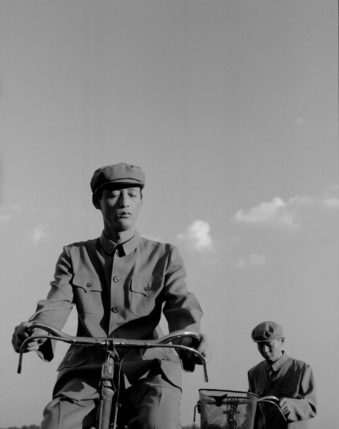
Wang Ningde, photography.
And it is worth considering Adorno’s difficult chapter on dying (and Heidegger) in Negative Dialectics, in light of the contemporary representation of desire and the erasure of death. Now death looms in almost every single crime show on TV and yet these representations are invariably about not dying.
There are countless shows featuring criminal forensics. Shots of dead bodies being carved up, dissected and much dialogue given over to quasi medical terminology. Çause of death, blunt force trauma’. Add to this the plethora of medical shows, many of which feature scenes of forensic analysis, and of cadavers as well as invasive operating room procedures. And yet, this endless stream of images of body cavities, of open skulls and disfigured body parts, seems to serve as a means to avoid addressing questions of mortality. It was Heinz Weiss who postulated that psychic space preceded psychic time, that in clinical practice the analyst’s interpretation must create a space for the analysand to reintegrate projected parts rather than reconstructing the past. Weiss was discussing depressives, but it is worth quoting Cordelia Schmidt-Hellerau in her discussion of Weiss…
“One form of timelessness is “romantic idealization”: the patient feels the analysis fulfills all he or she has ever longed for; such a patient might be focused on the analyst’s voice while disregarding the analyst’s words. When the analyst interprets this, the patient experiences it as a cruel attempt to humiliate and dominate him or her. Endless romantic idealization then turns into endless suffering, both of which deny any separateness. Another form of timelessness is “withdrawal into an omniscient desperation” that has to be maintained in order to ward off any feeling of hope, which would threaten the patient’s psychic equilibrium. Further, “static hope and ongoing resentment” describe a state of mind that consists in painful waiting and illusionary hope that perpetuate a state of suffering; chronic resentment keeps old wounds open and does not allow for reparation.”

Felice Beato, photography. (Execution of two Indian mutineers, 1858).
This is interesting in terms of Klein’s notion of the contemporary schizoid paranoia position taking precedence, if thats the word, over the depressive position. For I’m no longer sure this is exactly right. For there is a kind of paradox at the heart of the contemporary malaise, or madness, really, of Western society. Let me quote Adorno from his Lectures on Negative Dialectics..
“…the thesis according to which the negation of the negation is the positive, the affirmative, that this thesis is untenable. That the negation of the negation is not – or at any rate is not automatically, not as a matter of course – something which results in positivity. Today, – in a [historical-political] situation which people experience, in their heart of hearts, as deeply ambivalent, a situation which at the same time is so overwhelming that they believe there’s nothing to be done about it (or perhaps because they really are, de facto, powerless against it) – there predominates, in the spirit of our epoch [allgemein verbreitetes Bewusstsein], something akin to the ideal of abstract positivity.”

Eugen Gabritschevsky
Adorno argued that the negation of a negation did not necessarily lead to a positive. It feels as the paranoid and the depressive are both active, and hence there is a profound ambivalence in the western collective. There is also, it should be noted, besides the countless foresenic images, an entire sub genre of zombie films. For one of the many meanings one can read into the zombie franchises is a denial of death. Its not really death if you can return.
“In some respects, recent stories of the supernatural reproduce the “unfinished business” model of the commerce between the living and the dead. The dead return either because the rituals of burial, commemoration and mourning have not been properly completed (Truly Madly Deeply), or because they are evil and must be exorcised (Buffy the Vampire Slayer), or because, like the ghost of Hamlet’s father, they know of a secret to be revealed, a wrong to be righted, an injustice to be made public or a wrongdoer to be apprehended (Ghost). When the dead return to claim an unpaid debt, it is perhaps not surprising that the response of the living is characteristically ambivalent. We are doubly angry at the deceased. How could they leave us, and why do they not leave us alone?”
Szymon Wróbel
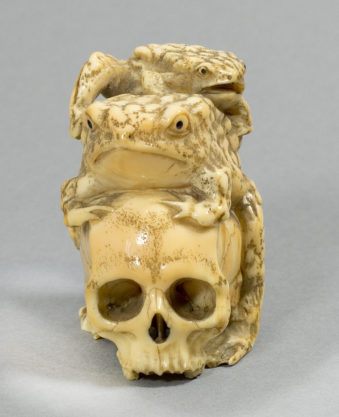
Japanese Meiji period, carved ivory.
Peter Sloterdijk describes a contemporary rule of cynical reason as ‘the vitality of dead men’ (qupted by Wróbel), and this he associates with vampires. Wróbel notes that today’s TV and film tend to feature a kind of ‘vampires in rehab’. And I think this is perceptive, and has quite a few implications. And this discussion is actually in a chapter on Machiavelli, who imagined monsters of fertility, in a sense. And Sloterdijk is correct in pointing out the loss of productivity in these vampires of rehab.
“Had not Brian Eno, the author of the Music for the Airports, confessed with daring honesty that one of the important features of ambient music is not only its ability to absorb noise, but above all to prepare the human being for death?”
Szymon Wróbel
This last quote was in relation to Greek tragedy, and the origin of the chorus. And the relevance here returns us to the creation of psychic space. The chorus had multiple purposes, but one of them was as a wall that defined the playing area, the stage for the revealing of the present. And the wall is also and always a screen.
“The space of the depressive position has no particular shape or site and continually creeps through the subject’s behavior and actions, in-forming them, but it is also a space of dissolution.”
Esther Sánchez-Pardo
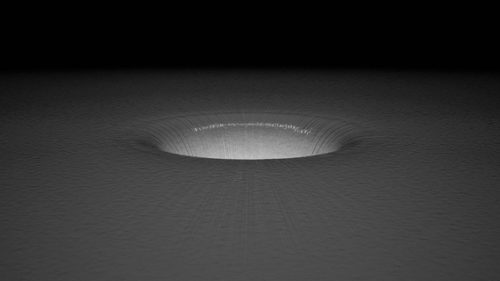
Caroline Corbasson
The constant repetitive nature of entertainment images of the dead is also about the manufacturing of spaces of dissolution. There are almost no medical or forensic crime shows in which the interior of the body is not presented. Images of blood soaked operations, or bloodless autopsies are both delivering the same internal realm. It is a way to reduce the human to a mere assemblage of parts. And one of the tropes of character definition is indifference to the sight of the opened corpse, or the removal or organs in the living. Zombie Tv and film also, obviously depict the human as sub animalic almost.
“It would seem that for the unconscious nothing is more distant and more unfathomable
than the inside of the mother’s body and, still more, the inside of one’s own body.”
Melanie Klein

Dove Alouche, manipulated photograph.
300,000,000 people suffer from depression, and by 2020, depression will be the second most common disease globally. This according to the WHO. “—Klein postulated that the primary function of the ego was the deflection of the death drive outward, toward an external object that was then feared as a persecutor through projection.” This from Esther Sanchez-Pardo, who goes on to emphasize the centering of the male ego on a sadistic penis. And Klein never discussed the, for lack of a better word, the primitive ego. That it was only loosely organized, and implicated in or confused with partial objects and feces.
“Melancholia is thus the aborted introjective movement brought about by an excess of sadism in the oral cannibalistic stage. The effects of the miscarriage of introjection are harbored inside as remnants, as residual by-products of a thwarted labor of love. Metaphors of death and dying objects bleakly color this scenario…”
Esther Sanchez-Pardo
In a society so predicated on exclusion, the fear or anxiety of expelling good objects along with bad is cause for severe anxiety. The only difference Klein saw between the paranoid and the depressive was the inability of the paranoid/schizoid for full identification with the internalized object. The sense of both depressive anxiety and paranoia feels acute today. And Klein also saw the earliest front edges of depression coming from the first deflections of the death drive. And here I think it is necessary to at least establish a few partial parameters for what Freud meant by the death drive. For as he said himself, this is our mythology. The mythology of the self is found in the instincts. Gregory Rochlin wrote that human aggression is different from animal aggression because human aggression is defending its narcissism (there is some argument that animals feel humiliation and even shame, connected to reduced status, etc….but whether that constitutes narcissism is an open question I’d say).

Derrick Adams
The culture industry that manufactures a constant stream of entertainments that depict dead humans, or mutilated corpses, or sick or damaged humans are unconsciously creating operating theatres for a kind of melancholia. The fact that medical operating rooms are such a prominent feature of TV, or forensic laboratories or morgues, suggests this has all reached an obsessional level. And it is this quality of repetition that mimics the tropes of zombies that just won’t die, but come back again and again. And the quasi comedic iZombie is, in a sense, zombies in rehab. The seductive appeal of dead bodies on display, turned inside out, is the counterfeit substitute for inner life, and its revenge.

Aaron Blum, photography.
There is a case study of Klein’s, presented early in her career, in 1930; the case of ‘Little Dick’. Its relevance (and it was hugely important for Lacan) was that the little boy exhibited no outward anxiety until Klein engaged with him and told him a story. It was to be formative for Klein in establishing the idea of anxiety as the engine for symbolization and for fantasy. But the boy’s lack of outward signs of anxiety was belied to some extent by an unnatural calm. He also showed a marked inability to manipulate objects with any dexterity. It was the story that set in motion a long therapeutic process, and certainly came to be a case that Lacan saw as significant in terms of anxiety as the discourse of the Other. Without getting into Lacan here, the Kleinian take away was complex, but her view on his lack of dexterity touched on what she felt was repressed aggressions. And it was the naming of things (knife, scissors, etc) that created a ‘space’ for the discourse. It was really the narrative, in which naming took place. And it was in a dialogue, even with a four year old, that the analysis created a space, one in which the story was essentially co-created. Now I am sort of taking the bits of this case study that suit me here, but the idea of discourse, of audience and a scene or stage for the story or drama to unfold is built into the unconscious. And it really is moot if one wants to argue against the Freudian unconscious. In a society today in which story has degenerated to the level of obsessive nearly infantile repetitions of image code, the loss of mimetic capacity suggests both a massive depressive inertia and a level of schizoid/paranoid paralysis both.
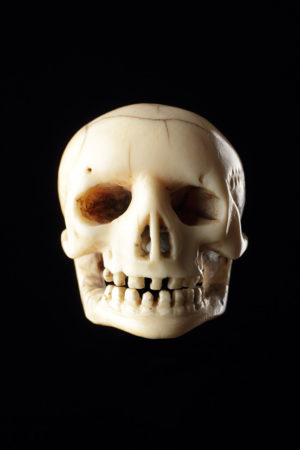
Carved ivory rosary bead, South German, 17th century.
“In the Kleinian formulation we observe that paranoiac collectivities are constituted out of a bricolage of psychic phenomena related to the death drive. As with the psychic life of the infant, projection always brings inadvertent ramifications to the psychic life of the collectivity. I allude here to the enjoyment that can be found within destructive sensation, the ‘desirability of what is being projected away… illicit pleasures and joys… properties that have as such been stolen away by others’ (Hook, 2008). Klein describes ‘the angry feeling that another person possesses and enjoys something… the envious impulse being to take it away or spoil it’ (1957). In other words, the social defences ranged against an interior impulsion to deathliness create in themselves a site of social enmity. In Klein, the death drive is prodromic of social destructiveness.”
Jon Thurston
The idea of empty body cavities that nonetheless yield clues to solve crimes is one that feels almost confessional. The clues will help find the killer, but little else. The victim is further degraded, and kept for display. One of the constant bits of dialogue in crime and cop TV is where the victims family asks for the body to be released for burial, but is told the autopsy isn’t completed yet and they, the authorities, must keep the corpse a bit longer. The body is then put in a refrigerated locker in the basement morgue. That this bit of narrative is so endlessly repeated means that none of the elements can be accidental.
“In the Kleinian system, the death drive is the extreme limit of destructive rage, such as is found, for instance,in the paranoid position. In Freud, however, eventually the exact
opposite emerges:the death drive as the movement towards Nirvana; no longer death wrought by the drive, but the death of the drive, the negation of desire. It is towards that vision that we are drawn by an expression like ‘the silence of the death drive’ which evokes, once more, the silence of the galaxy.”
Jean Laplanche

Hermann Nitsch
Klein of course saw the depressive as a more mature position than the paranoid but I suspect that so described depressives (Freud’s everyday misery) is no longer quite that. Ed Curtain recently wrote a perceptive piece on today’s mechanisms of propaganda:
“The basic way people’s thinking is controlled today is by confusing them and creating a perpetual state of mental vertigo. Muddled and disordered by double-speak, illogical reporting, and a kaleidoscopic merry-go-round of conflicting reports, the average person is reduced to a mental mess.
“To the average man who tries to keep informed,” writes Jacques Ellul in Propaganda, “a world emerges that is astonishingly incoherent, absurd, and irrational, which changes rapidly and constantly for reasons he can’t understand.”
Take Donald Trump. He is regularly castigated by the media for his endless stream of tweets and contradictory statements. He is called a moron, mentally imbalanced, and a clown. But what these critics fail to grasp is that he is beating them at their own game of sowing confusion. He is our modern mythic Johnny Appleseed, wildly spewing seeds of bedlam to incite and confound. He is no anomaly. He has stepped out of our celebrity reality-TV screened world to carry on the media’s task of what Orwell said was a necessary task for the rulers in a totalitarian society: “to dislocate the sense of reality.”

Bernardo Luini (1520).
Adam Johnson who writes for FAIR, noted in some tweets all the various comparisons that journalists and commentators have made about Trump. He has been compared to Stalin, Mao, Mussolini, Homer Simpson, Che Guevara, Lenin, Castro, Nero, Caligula, Saddam Hussein, Ho Chi Minh, Coriolanus Snow, and Boss Tweed. There are doubtless many others. I note all this because one of the attendant symptoms of contemporary paranoid depression (I’ll just use that term) is distrust of one’s own feelings and perception. And that confusion is built into contemporary mass culture. Now Ellen Dissanayake has written on pre modern societies and art, or creativity. And on the evolutionary importance of the pleasure children (and adults, really) find in working with their hands.
“Dissanayake wrote an exhaustive study of the urge “to do things with one’s hands”, of its importance in child development and in the culture of pre-industrial societies. She came to the conclusion that the intensely pleasurable affect which accompanies successful completion of a manual task has presumably an evolutionary significance and in her opinion played a critical role in the evolution of Man as a thinking animal.”
Dov R. Aleksandrowicz
It is interesting in reading critics of Dissanayake, that they almost reflexively criticize her notions of ‘social cohesion’ being one of the pleasures of art and creativity. One writer pointed out that modern art is about alienation. Such is the distrust of experience itself. One critic said ‘well, Beckett and Pollock only point out alienation’, without thinking perhaps such emphasis on the present actually is part of a process that creates the pre conditions for exactly social cohesion.

Paul Gagner
“People living in traditional societies seem much closer to the verities of life than people living in highly technological societies like our own. Because they have known each other’s families for generations, events like weddings and funerals—matters of life and death—are important occasions for socializing. I attended my first funeral and saw a dead body for the first time while in Sri Lanka, and I was initially amazed that babies and small children were also in attendance ( ) I realized that this kind of formalized handling of grief, with regular, community-sanctioned opportunities to weep and express one’s loss at greater and greater intervals of time, gave to the bereaved a sort of patterned program to follow, a form that could shape and contain their feelings. Instead of having to suppress their grief and sense of loss in the interests of being brave or “realistic,” or having to release it haphazardly or in solitude, the bereaved is enabled—compelled—by the ritual of mourning to acknowledge and express it publicly, over and over again, within a preordained structure.”
Ellen Dissanayake
The short version of what Dissanayake is outlining is that ritual and ceremony are really extensions of childhood play — at least partly. That play, being *not real* is learned through practice in childhood. And that being able to distinguish between real and not real is a basic ability born of maturation. And it occurs to me here that one of the *confusions* encouraged by mass culture is a message that suggests that ability is actually hugely difficult. Don’t trust what you already know.
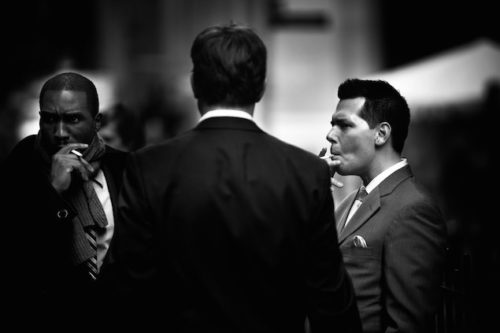
Jeff Hutchens, photography(Getty Images).
Now Dissanayake ends up with pretty simplistic conclusions, but the point is that the early childhood process of the learning of fine motor skills has been mediated to some extent in contemporary societies. The screen life of children today has de-emphasized the importance and pleasure of learning to work with your hands. Manipulating a smart phone contains only an almost morbid repetitive skill set. The pleasure is distanced. If it is really pleasure at all. This morbidity feels as if it is extended to all manner of entertainments, today. Fine motor skills are in the hands of surgeons who, if you watch TV, are mostly cutting open victims of shootings or stabbings. They are emptying out the inner life of humans. They are professional, just like those cops watching the procedure. In medical dramas the surgeon is inserted into kitsch narratives of sentimentalized optimism — and then usually endowed with qualities of the ordinary. This is a kind of reflex trope now in Hollywood product; that great skills and ability are housed in the body of ordinary people, just like you and me. The only exception is the military killer or police detective, who are the contemporary incarnation of deities. The detective today, like those forensic priests of the basement morgue, are hunting for clues. They employ high technology and solve riddles of murder and crime with various disoveries presented on screens. It would be fascinating to compile a film loop collection of all the images of screens used in TV and film today. It would be hours long of course, but fascinating anyway.
Klein saw the depressive position (she no longer used the term *phase*) as a fully integrated identification with the introjected object…and it was always empathic. I’d suggest today we have non empathic depressives. The identification is perhaps full or complete, but it is unstable and linked with a return to paranoia.
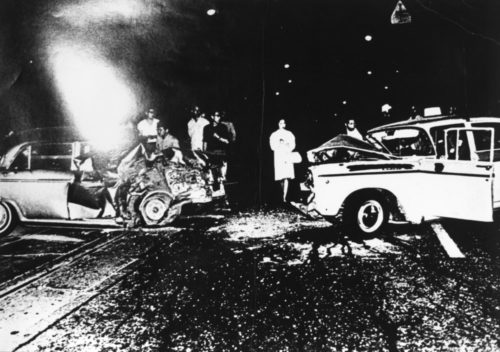
Daido Moriyama, photography.
“Amongst the Nazis it was still race, which nowadays not even the dumbest still takes seriously. It seems to me that at the next stage of regressive ideology it then simply becomes the positive in which people are supposed to believe – in the sense for instance in which one finds it expressed in the formulation, [to be found] in the marriage advertisements, of a “positive orientation to life”, where this is held up as something most especially praiseworthy. There is an institution that I know of that goes under the name of „Association for the positive organization of life“ [Bund für positive Lebensgestaltung]. This really does exist – I haven’t made this up, in case you may wonder. And this „Association for the positive organization of life“ does of course in reality boil down to a training, in the course of which people for instance lose their bashfulness and learn to present and enjoy themselves as proficient salespeople before God and humanity. This is what the notion of positivity has turned into.”
Adorno (Lectures on Negative Dialectics)
The intentional sowed confusion of mass culture contains within it, almost in every instance, a fetishized positivism. For the positivism of which Adorno wrote is both already established and fixed (positivist philosophy for one) and implies the *good* or affirmative. Propaganda today, at least that linked with mass culture and entertainment, is both confusing (reduced narrative coherence) and still morally uplifting and even ideal (positive). As Adorno asks in his lecture, what exactly is being affirmed? But such is the conditioning of the public today this sort of question is experienced as a kind of insult. I suspect that for most people the answer (usually only uttered inside their head) is well, LIFE is positive and to be affirmed. And this makes a certain sense coming from a society that inflicts more death and suffering on the world than perhaps any in history.
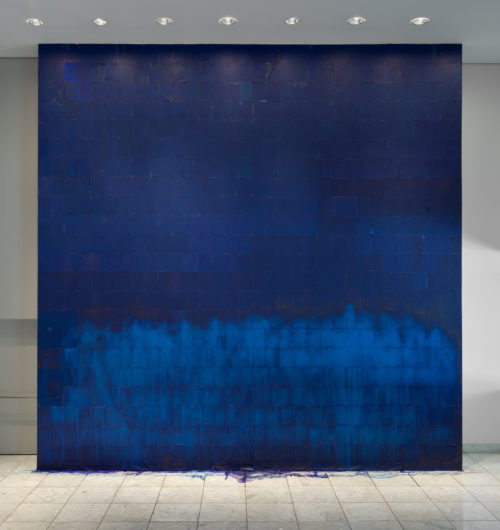
Latifa Echakhch
Children explore without stimuli encouraging this. Animal studies indicate a seek and play system unrelated to fear or anger. This seems, if one believes neuroscientists, to take place in a very old part of the mammal brain.
“We can now formulate what seems to me the most appropriate definition of the urge to mastery : It is an evolutional product of a basic characteristic of living matter, a biological imperative, not a quality of living matter but rather a precondition to life. At some point of the evolutionary process it became imbued with a positive affect. In man it is driven by narcissism, i.e. a derivative of the libido, and has a critical impact on self regard. It is closely associated with aggression, since any challenge to the urge to master mobilizes aggression in one form or another.”
Dov R. Aleksandrowicz
One of the problems with anthropologists like Dissanayake, for all their cogent research, is that they derive no politics out of it. Human evolution is still an historical evolution.
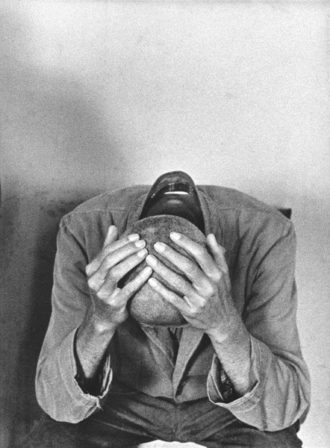
Gianni Berengo Gardin, photography (Psychiatric hospital).
“…one could no more imagine Nietzsche in an office, with a secretary minding the telephone in an anteroom, at his desk until five o’clock, than playing golf after the day’s work was done. Only a cunning intertwining of pleasure and work leaves real experience still open, under the pressure of society. Such experience is less and less tolerated. Even the so-called intellectual
professions are being deprived, through their growing resemblance to business, of all joy…. No fulfilment may be attached to work, which would otherwise lose its functional modesty in the totality of purposes, nospark of reflection is allowed to fall into leisure time, since it might otherwise leap across to the workaday world and set it on fire.”
Adorno (Minima Moralia)
Mass entertainment today, mostly created in Hollywood, is manufactured in offices by people who play golf. So it is no wonder that the products being consumed by millions are reflective of the empty inner lives, the emotional and psychic husks of the living humans who make them. Today’s lack of curiosity (something that both Adorno and Horkheimer wrote about a half century ago) is, then, linked to stifled childhood experiences, to schools that resemble prisons, to authoritarian indoctrination that ridicules ideas of cooperation and collectivism. For even when Americans may begin to organize, their impulse is mediated by a late capitalism that insists on a phantom individuality, an individuality that is merely abstract. We suffer an anxiety that develops in discourse with screens, with fragmented text and disappearing image. Social media such as Snapchat are striking for their transitory displays — nothing, no image, lasts long enough to contemplate. The old part of the mammal brain is in atrophy. Children, I am guessing, do less seek and play than they once did. Adults are taught to impose quality time on children; in other words to impress on them the regulation of time and effort, and an insistence on productiveness. So again the question is what exactly is being affirmed?

Your piece reminded me of a lecture I went to some weeks ago, that got me thinking of consumerism and death. Thought I’d share my thoughts and experience of the lecture below. It seems to me to be linked to the topics you raise here.
The lecture I went to was on the topic of contemporary death practices in America. The presenting scholar (whose name I forget, but I believe she teaches out of the University of Chicago), identified her background as ‘archeology’ and ‘anthropology.’ She focused her lecture on describing the burgeoning business of making objects from cremation remains–a kind of *souvenir* of the deceased’s body, if you will (this being my take on it, not hers). Apparently, over the last few decades, there has been a significant shift in American burial practices from coffin burial to cremation. This scholar has spent a lot of her research time interviewing entrepreneurs in the business of transforming remains (ashes) into objects, which include vinyl records that play the voice of the deceased, glass, paperweight-like orbs with the ashes mixed into them in pretty colours, and diamonds that you can have embedded into jewelry.
The lecture itself was more of a description of these practices than a critique of them; however, they were presented so neutrally, and with such a focus on the entrepreneur’s story, that I could not help feeling that the very “neutrality” and choice of subject was itself betraying an unquestioned political position (not unusual, of course). There was a focus on details such as stats regarding the cost of these items, and the demand for them, as well as details regarding the manufacturing of these objects (which was all very interesting, i might add). Curiously, they were always regarded as “objects” not “products.” Something to think about…is this the height of objectification? Or, could one make an argument that cremation objects are an attempt to introduce Benjamin’s “aura” back into our material world??
Whatever the case, auras or no auras (again, my observation, not the speakers), the description of these manufacturing processes produced in me a profound, affective response. There was something incredibly disturbing to me about these cremation practices. I think what disturbs me is that they kill death. Or, perhaps, put another way, they kill life. The manufacturing of a diamond from cremation remains is a poignant example because of the metaphor explicitly used by the company: “forever.” Diamonds last forever. They do not decompose and return to the earth as the body does, eaten by worms, returning to the elements.
Also distressing is the process of manufacturing a diamond. These diamonds take months, if not over a year to make, depending on their size. They are made by applying massive amounts of heat and pressure (no doubt contributing substantially to greenhouse gas emissions to produce that kind of energy required to compress this ash. An unsustainable industrial practice–a point not mentioned by the lecturer). The machines are also very noisy.
As I watched the documented footage of the manufacturing of human diamonds, I imagined myself dead, my body burned, then collected and crammed into a tiny, dark space–all noise, and squeezing pressure, and darkness, and lack of air, and incredible heat. Then after a year of this, emerging, rigid and fixed into a form only geological time can undo.
Of course one might say that I’m not conscious when I’m dead, I won’t actually experience being a diamond, etc. But that ignores the point and betrays a kind of false assumption that we know what consciousness is and where it is located. Even if there is no “I” anymore, the point I am trying to make is that there is incredible violence in this process which remains hidden behind some unquestioned narrative about “forever.” That violence is preserved on the earth and in the psyche. The manufacturing process that she described was the picture of hell. The process itself, completely irresponsible to the earth and the environment from which we have sprung, alienates us further from the earth in our death as in our life. And to “live forever” is, perhaps, to forget life. To NOT die, kills death and it kills life too. That is, is suggest, in part, why so many North Americans are illiterate in watching or making theater–because theater depends on living bodies, and the power of theater depends on them living so starkly and so vulnerably before our eyes because they are dying. We are dying.
I have thought a great deal about death ever since I was quite young. Sometimes the thought of my little heart not beating fills me with terror. Its beating is so familiar to me. In a way, it IS what I am. My only consolation is the thought of decay. Because I love the silence of the trees in the forest, and the forgiving firmness of the soil, and the nodding of the flowers in the wind–and if my body can decay and become all that, then maybe there is such a thing as peace.
Magnificent as always John. Loved your thoughts on Klein and contemporary ‘paranoid depressive’ malaise. It seems that the mind, the self, split and reduced both to its neurological ‘reality’ and its social-economic function, is no longer capable of proper introjection by the human subject. This in part accounts for the dual state of melancholy and anxiety.
“Given that there are no interesting characters, no car chases or shoot-outs, no violently stirred emotions and no dramatic action, why is the C.S.I. series so riveting? My guess is that the answer lies in the inner sanctum at the heart of all three series – the autopsy room.
I suspect that the cadavers waiting their turn on the tables are surrogates for ourselves, the viewers. The real crime the C.S.I. team is investigating, weighing every tear, every drop of blood, every smear of semen, is the crime of being alive. I fear that we watch, entranced, because we feel an almost holy pity for ourselves and the oblivion patiently waiting for us.”
In cold blood – JG Ballard – June 2005